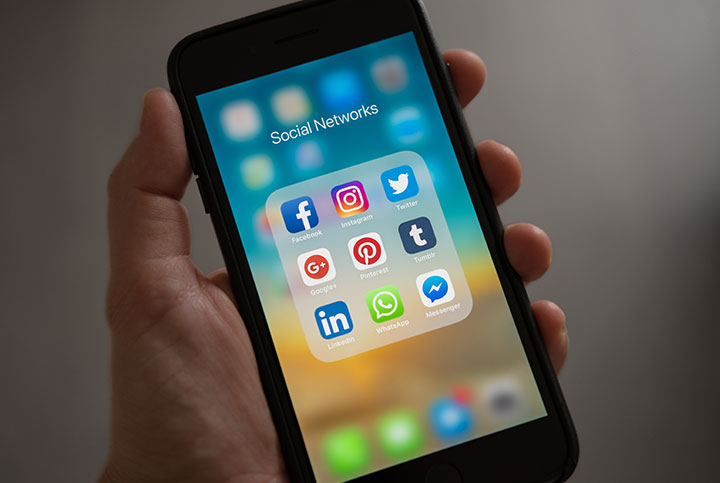The secret to effective marketing collateral
10 steps to making effective marketing collateral for your business
Do you want to know what's key to making effective marketing collateral?
It's actually very simple:
The key to making effective marketing collateral is having a clear process in place.
That way, not only do you ensure that the collateral you produce is effective, but you also ensure that you follow a strategy that can be replicated.
Here’s a good process outline we've put together for you to follow:
1. Outline your objective
Before creating any sort of collateral, it’s important to first clearly understand the reason for it. Understanding where you’re going to use it, and what you expect it to achieve, is crucial; these factors would make a big difference in organizing the rest of the process.
A simple way to plan this out is to map it to your sales funnel: is this meant to be used at the Top, the Middle or the Bottom of the funnel? For instance, if the purpose of the collateral is to attract and inform potential buyers, it will require a very different approach from other collateral designed to address logistical details that the client might ask the salesperson.
2. Understand your buyer
As we mentioned in our introduction to marketing collateral, understanding your buyer will help inform your marketing collateral strategy and help you decide how best to utilize it. This, of course, entails understanding wherein the buyer’s journey your client currently falls, and what are the key pain-points that they face. The more detailed your buyer profile is, the more effective your strategy will be.
Your collateral can then be adapted to fit the situation, and actually be useful to your client.
3. Set SMART goals
SMART goals are an excellent method for making sure your objectives are significant and trackable.
To set SMART goals, keep in mind that SMART stands for “Specific, Measurable, Achievable, Relevant, and Time-bound.” This approach is highly effective in ensuring your goals are always clearly outlined and sensible.
Let's break it down for you:
- Specific: Ensure that your goals are detailed out enough to ensure that you can actually tell when you’ve achieved it. Avoid generalization, and make sure to narrow its focus down to key targets.
- Measurable: Make sure you know exactly where you stand today, and where you will be after. Having clearly-defined metrics will help you understand what you need to achieve, and allow you to stay on track.
- Achievable: While it’s important to constantly set goals that you have to stretch for, there is no point in setting an impossible target.
- Relevant: Goals only make sense if they are relevant to the objective. For instance, a goal of driving traffic to a company website only makes sense if it’s targeting the right audience, and not if it’s just through generic giveaways.
- Time-bound: Establish a clear end-point so that you know how much time you have to make it work, thereby limiting the effort that goes into it, and ensuring that you can see results within a meaningful window.

Of course, your SMART goals need to align with your objective as well, in order to make sure that the team is heading in the right direction.
4. Define distribution channels
How you intend to make your content accessible will impact everything from the message to the medium. As you can imagine, your message on a billboard situated near your target offices will vary from the message you provide in a handout during a meeting with the client. Therefore, it is important to customize your message to fit the target audience, and ensure that you are providing them the right message through the right channel.
It’s also a good idea to think about how you could use the collateral after the current campaign. While more prevalent with digital collateral, even physical collateral can be repurposed and utilized in multiple ways. Defining the distribution channels for those alternate uses early is a good idea, and helps you think of all the ways that your collateral can be repurposed. We talk about repurposing in more detail in Step 9.
5. Set up a clear execution process
Having a well-defined execution process is essential to making sure that you are always producing content of the highest standard. Most teams tend to focus extensively on the creation of the content, and forget to pay equal attention to the other steps. We outline the key steps involved below:
- Creation process: This refers to the actual design of the collateral itself. The focus here is to make it distinctive and engaging, while still holding true to the brand guidelines. We’ll discuss this more in the next step, as it requires a little more detail.
- Proofing: Reviewing your collateral while it’s still a soft copy to make sure that the language and tone used is correct, while also making sure that everything has been laid out correctly, is an obvious requirement. However, too many teams tend to skip over this, resulting in silly errors, which tarnish the brand’s reputation. It’s always better to make sure that multiple team members review the material to mitigate any one person overlooking errors. This is especially important for smaller teams, as more often than not, the person supervising the content creation is also solely responsible for the proofing. This isn’t the best idea, as they may know the material too well, and therefore not notice spelling errors or syntax issues. As much as possible, try to ensure that fresh eyes always give the content a once-over.
- Publishing: After making all the required corrections, you need to test out the material in a dummy version. In the case of printed collateral, this means doing a test run, to make sure there are no errors in printing (such as colors, images used, and alignment). Similarly, when it comes to digital content, it’s making sure that the page is set up correctly, links are working, and that the images and text are being represented correctly across browsers, OS’s, devices, etc.
- Final Review: The final once-over, this is usually done by senior management to make sure that the finished product is in line with the overall goal and brand message. If everything has gone as planned, this step is usually just a quick cursory glance by management to see how the client would experience it.
- Release: At last, you are now ready to release your collateral for consumption. At this stage, you want to make sure that the logistics are taken care of, and that your content is being distributed as expected in the channels that you had planned. With offline content, that could mean ensuring that the prints are made available to the team members who will distribute it, while with online content, it will be making sure that the content is uploaded to the website correctly, and that it goes into the promotion process.

6. Creating marketing collateral
Creating marketing collateral needs to follow a standard process as well, in order to maintain a standard of quality. In most cases, this part is usually outsourced to a professional agency, with the marketing team acting more as a supervisor, it’s important to make sure that your agency is given the right instructions. Some of the key checkpoints you need to look at are:
- Brand guidelines: The first step is to make sure that your agency is aware of the brand guidelines. This ensures that all communication looks connected, and speak with the voice of the brand. It’s important that the agency follows the accepted color scheme, fonts, and use the right logos in the right proportion. While you would want to differentiate between different marketing collateral, there needs to be a common thread or a common theme that connects them all. That way, a client receiving any of these collateral items should be able to instantly connect it to your brand.
- Visual design: The visuals used should connect with your brand’s message and personality instantly. Following standard layouts is a good practice, but even if you choose to deviate from the templates, it should still communicate the same feel. As predominantly visual creatures (the visual area of the brain makes up about 30% of the cortex), the way things look makes a huge impact on how we respond to them. It’s something that publishers have long known – despite the old phrase, we really do tend to judge books by their cover. It’s therefore not very hard to imagine that how we design our information can have a distinct impact on how it’s perceived.
- Typography: You need to have specific fonts that work with your brand image, and guidelines for how they’re used. This helps in conveying the right tone for your communication. While different fonts may be used for headlines and to attract attention, it’s important that the main fonts used are standard.
- Content: Lastly, and most important, the content itself. The content needs to be presented in a way that it grabs the attention of the client, and encourages them to engage with the entire collateral. While it might be tempting to just copy-paste information as is – especially in the case of technical information – taking the effort to re-structure it in an interesting and different way would generally be appreciated by your client.
7. Engagement and data collection
Once your collateral is ready, it’s time to share it with the concerned so they can start placing it as needed. Monitor how it’s engaged with, and what kind of responses you’re getting. If it requires direct interaction with the client, you can also use it as a way to gather new leads and contact information. If possible, get some feedback from the engagement to try and understand how well it succeeds at the objective. Whenever possible, try to track how it’s used – this is easier to do with digital collateral, but can be done through physical collateral as well. All this data that you collect will help you better assess your effectiveness at the end.
8. Promotion
If the collateral you’ve created has some value, you might want to promote the giveaway. Promoting it through traditional, digital or social media can help multiply your reach, allowing for it to be shared and re-shared through different channels. When collateral is tied to a good campaign, it can also be used as part of a cross-promotion. For instance, encouraging customers to take photos with a promotional banner in an unusual place and promoting it on Instagram could then result in the opportunity to engage with them again in a different way – maybe a special event, or a prize. Using multiple channels to promote your collateral will, in turn, promote your campaign, and help you extend the collateral’s life and value.
9. Repurpose
After your event or activity is over, and the collateral has been readied, you can then look at different ways to utilize that collateral again. Promotional physical collateral may be useful for sales teams to carry to client offices. Digital collateral, especially content-based collateral, can easily be repurposed and used in different ways. A simple example of this is repurposing a long blog into an infographic or connecting it to a series of articles, and publishing it as an e-book. With a little bit of creativity, you’ll be amazed at how much you can extend the life of your marketing collateral.
10. Analyze and optimize
Once completed, you need to go back and assess how well your collateral has performed. Compare it to the goals you set, and see if you’ve successfully managed to achieve your goals. If not, try to identify where you went off-track. In general, it’s good practice to look back at what you did right, what you did wrong, and what you could do better. That way, you will be able to optimize your efforts the next time around and be more effective.
This is the second part of a series of posts we'll be doing on marketing collateral, its evolution, and its continuing value to organizations today. Come back again soon for the next installment, where we talk about physical collateral and if it's relevant today (hint: it is).
You can read part 1 by clicking on this link: An Introduction to Marketing Collateral.
For more information on how you can use your digital marketing collateral better, take a look at how Paperflite helps you leverage your content to gain actionable insights from your conversations.

